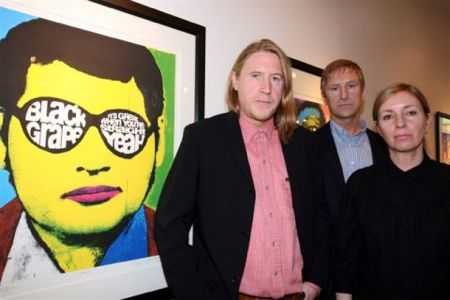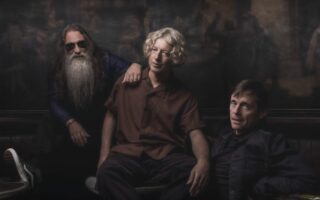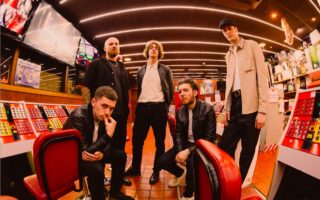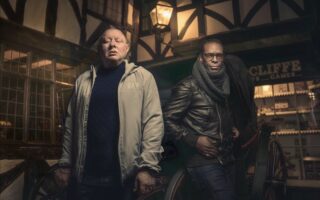Matt Carroll, along with brother Pat and Karen Jackson, made up the legendary Central Station Design which created the effortlessly cool and exciting work that accompanied albums by James, Northside and many other Factory bands, most notably close cousins Shaun and Paul Ryder‘s The Happy Mondays. Central Station gave Factory bands a unique image as well as being as major influence on the Manchester music scene as much of the bands themselves were.
Tony Wilson: “The second half of the factory story is best summed up by the painterly eccentricity of Central Station, Matt, Pat and Karen.”
Colourful, humorous and always retaining a cool vibe, Central Station have recently applied their style to the stars of long running British soap Coronation Street to help celebrate its 50th anniversary; showing one again why their work is still as exciting and relevant as ever.
Here Matt talks to Carl Stanley about influences, the meaning behind some of his work and hanging with Shaun, Paul and the rest of the Mondays from the basement of Capital Records to the Shebeens of Moss-side at 2am.
CS: What was it that got you into art, and what were your influences?
MC: As kids growing up, me and Pat were into four things: music, football, art, and boxing. We came from a big family of eleven – nine brothers and sisters – and we lived in a four bedroom council house so art, or drawing as we then called it, seemed like a great way of finding your own space.
I wouldn’t say that we were surrounded by art as kids at home other than the odd Lowry print of Peel Park, Salford on the wall which I always loved as a kid. But our eldest brother had a massive record collection of 1000’s of albums which would be leaning against every wall in the front room a yard deep, these would be our first real introduction to art. I loved the cover art, and would change the front cover of each pile of records every other day or see them change as they were played, these were a big influence. Even as kids we’d buy our own records, and redesign the sleeves ourselves, or if we bought a single without a proper sleeve we’d make one. We’d spend hours copying images from marvel comics. Drawing pictures and cartoons of pop stars and people off the telly.
Another big influence was our Dad who introduced us to magazines and books that we would never have looked at. It opened up a world that had a massive effect on us. Some of the visual images we discovered at that time like when we read about the air disaster with the rugby team in the Andes, that fascinated us for about 20 years.
Reading about things like the Baader-Meinhof gang, terrorist movements, stuff like that had a big impact on us and influenced our work eventually. It’s funny to think that when we had our first exhibition at the Manchester City Art gallery people like Mick Jagger and David Bowie turned up to our show. Itss odd to think that David Bowie was one of the of the pop stars we used to draw when were kids.
In fact, just thinking back, I’d forgot, years later, after we had done the Black Grape art work, The Stones asked us if we could go down to their offices in London to show our work for a possible new album that they were working on, but as history has it Keith, the ex art student, wanted to do it himself and that became the cover.
CS: How did Central Station come together?
MC: After a short time working in London we decided to move back to Manchester because that’s where our mates were and we would spend most weekends heading back up to Manchester to go out anyway. So after spending some time on the dole, me and Pat decided that we should fall back on some of the skills that we already had, and set up our own company Central Station, using our background and skills in art and design.
The name Central Station Design came from our favourite derelict building in Manchester, which was behind the Free Trade Hall, it was the old Central Station Railway station.
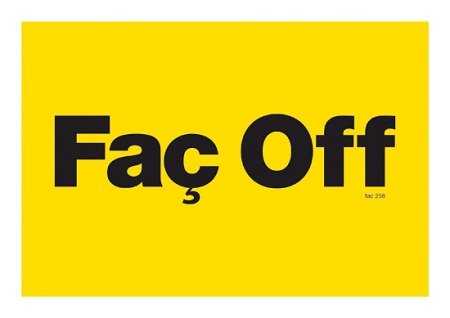 CS: How did you work together, who did what?
CS: How did you work together, who did what?
MC: Pat and I have never disclosed the way we work, and even from the early days when we worked from a run down warehouse building on Sackville Street in Manchester we always kept the door firmly locked and will continue to do so.
CS: How important was acid house and the Manchester music scene to Central Station?
MC: We have always pretty much had our own agenda. I think we had an influence on that culture rather than the culture having an influence on us. So yeah I think we had a massive influence on the way that culture was perceived visually, but we had already been doing stuff like this long before so called acid house.
CS: What was the first album cover you did that caught the attention and started getting Central Station talked about?
MC: I think the first cover that got us noticed was ‘Freaky Dancin’, because of our use of colour and the fact that it was so radically different to any of the post punk industrial stuff at that time.
CS: Did you enjoy making the artwork for bands other than the Mondays?
MC: Yeah we were always given total freedom to do what we wanted to do.
CS: What’s your favourite Central Station album artwork and why?
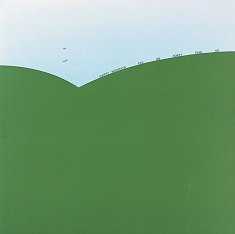 MC: ‘Delightful’, the first Mondays cover, that cover was pure punk rock in its fuck off attitude, and simplicity. Because it was a massive fuck off to all the over designed shit at the time, it represented a time for change, the new birds on the horizon. It was also pure fresh and new. Another favourite is ‘Amateur Night in the Big Top’, or ‘Clowns and Pet Sounds’ as it was better known and was the original title.
MC: ‘Delightful’, the first Mondays cover, that cover was pure punk rock in its fuck off attitude, and simplicity. Because it was a massive fuck off to all the over designed shit at the time, it represented a time for change, the new birds on the horizon. It was also pure fresh and new. Another favourite is ‘Amateur Night in the Big Top’, or ‘Clowns and Pet Sounds’ as it was better known and was the original title.
CS: Late 80’s: The Happy Mondays were establishing their sound and Central Station are being recognized for their work, you and the band must have some great memories from this time?
MC: In the early days me, Pat, Shaun and Paul had grown up together so we were always close, at the end of the day we are family, so you would expect that. Yeah, to many, the first tour of America playing CBGBs, the acid in Cleveland, Ohio, the recording of ‘Pills n Thrills…’ in LA at Capital Records’ recording studio, in the basement of the Capitol Records Tower, where Frank Sinatra had once recorded. The famous Paris-Amsterdam trip, Glastonbury…I could go on.
In Manchester, yeah we would meet up most nights after work. We were working from Sackville Street and they were down the road in the Boardwalk basement, after nights out at the Hacienda. Once that shut at 2 o’clock there was fuck-all else to do, so we’d end up going to places like The Kitchen in the flats in Hulme, or to Shebeens in Moss-side. At one point we all ended up living together in the same house, the three of us, our Shaun and Bez. We had massive parties going on for days.
CS: The ‘Thrills, Pills and Bellyaches’ album cover contained a sweet wrapper that was removed from the original cover due to legal wrangles, does that mean these covers are worth a few quid?
MC: Long story, but yeah am sure the original album covers are, or will be, worth a few quid. Like the original ‘Bummed’ cover with the blind embossed type.
CS: What do you think is Central Station’s most successful and known piece of work?
MC: One would be ‘It’s Great When You’re Straight’. Yeah, number 1 in the UK and the double platinum selling album worldwide, it’s great to think all those hundreds of thousands of people have our artwork in their homes, just like where we started with the album cover art at home. It’s better than any art gallery.
CS: Were you still busy through the 90s? Any success with Central Station after Factory?
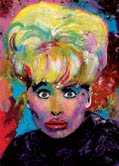 MC: Yeah, in fact the whole of the Black Grape body of work was done five years after Factory, and was released by Radioactive Records in Los Angeles and the first album like I just said was a massive success. We also worked for the BBC, Granada, and ITV and continued to work with other record labels like Off World Sounds and Little Bigman Records, and worked with Tony on In The City. We also had an exhibition at The Barbican, London. The Best Independent Design since the 60s, touring the Far East, taking in China, Taiwan, Japan etc. Also, an exhibition of our work in Lyon, France, and shows in New York and Sydney.
MC: Yeah, in fact the whole of the Black Grape body of work was done five years after Factory, and was released by Radioactive Records in Los Angeles and the first album like I just said was a massive success. We also worked for the BBC, Granada, and ITV and continued to work with other record labels like Off World Sounds and Little Bigman Records, and worked with Tony on In The City. We also had an exhibition at The Barbican, London. The Best Independent Design since the 60s, touring the Far East, taking in China, Taiwan, Japan etc. Also, an exhibition of our work in Lyon, France, and shows in New York and Sydney.
CS: Moving on to the recent exhibition of Coronation Street stars’ portraits created in the style of Central Station to celebrate the Street’s 50th anniversary. How did this come about?
MC: In 2008 we had an exhibition, Fac Off, a Central Station retrospective showing our Silk Screen prints and other work. Members of the cast from Coronation Street and people from ITV came to the opening night, that’s when the initial contact was made.
CS: Is Gary Neville a fan of your work?
MC: Yes, well I hope so because he came to the opening of our exhibition.
CS: What is the style of Central Station?
MC: I think our work has always been honest and from the heart, you could describe it as a subconscious or subliminal intake of the world around us. A lot of people become adults and they fucking erase everything they think is no longer important, we’ve always believed that’s the stuff you keep.
CS: The ‘Fac Off’ exhibition showing Silk Screen prints of Factory images has been quite popular. I read a comment by you saying people turned up to the exhibition expecting a party. Does this piss you off when trying to put your work out there like any other artist?
MC: No. Art is for everybody to enjoy in the same way we were given the opportunity to do so via whatever means we had as kids, and we have been lucky to do this. Factory Records became an outlet for us to infiltrate a commercial environment, our art, images like ‘Bummed’ and ‘Carlos the Jackal’ were exhibited in high street shop windows, people’s homes and posters were plastered around the country. We were part of an underground movement, using the establishment to communicate to a wider audience.
In fact we made a point, that at our first exhibition we wanted to bring people into the city art gallery that would normally never step foot in a place like that, and we did, it was the biggest opening attendance they had ever had, and also one of the most popular ever shows.
CS: How Central Station became a part of the Manchester music scene was quite unique, like what Warhol meant to the New York scene in the later 60s. Do you see anyone out there doing the same today?
MC: No.
CS: What are Central Station’s plans for the future?
MC: Central Station will continue to develop in its own style and with its own agenda.
(Carl Stanley)
View Central Station’s FAC images here, while the Coronation Street work is available here.
This interview is dedicated to Mary Carroll

